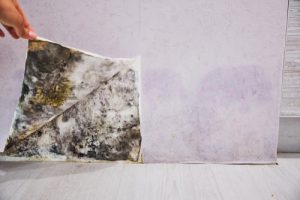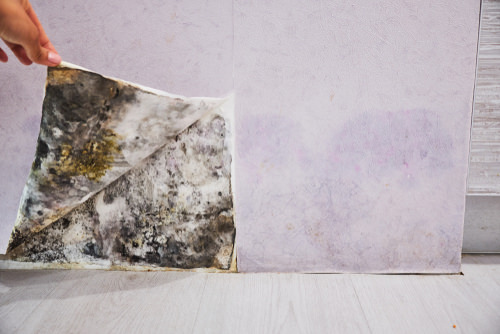Does Homeowners Insurance Cover Mold? – Everything You Need to Know
Free Insurance Comparison
Compare Quotes From Top Companies and Save
Secured with SHA-256 Encryption
Kristen Gryglik
Licensed Insurance Agent
Kristen is a licensed insurance agent working in the greater Boston area. She has over 20 years of experience counseling individuals and businesses on which insurance policies best fit their needs and budgets. She knows everyone has their own unique needs and circumstances, and she is passionate about counseling others on which policy is right for them. Licensed in Massachusetts, New Hampshire,...
Licensed Insurance Agent
UPDATED: Dec 4, 2023
It’s all about you. We want to help you make the right coverage choices.
Advertiser Disclosure: We strive to help you make confident insurance decisions. Comparison shopping should be easy. We are not affiliated with any one insurance provider and cannot guarantee quotes from any single provider.
Our insurance industry partnerships don’t influence our content. Our opinions are our own. To compare quotes from many different insurance companies please enter your ZIP code on this page to use the free quote tool. The more quotes you compare, the more chances to save.
Editorial Guidelines: We are a free online resource for anyone interested in learning more about insurance. Our goal is to be an objective, third-party resource for everything insurance related. We update our site regularly, and all content is reviewed by insurance experts.
Finding mold in your home can be a frustrating and unsettling time, as it has the potential to cause serious health issues that may compromise the immune systems of vulnerable family members living within the dwelling.
Mold tends to grow in warm and humid areas of the home, such as the basement, bathroom, and attic, areas that you might not frequent as often as the open living spaces. Therefore, many are unaffected by mold exposure, but that doesn’t mean it’s not a severe issue that should be resolved immediately.
Not only does mold have the power to compromise your well-being, but it can also impact your bank account in a huge, negative way. According to HomeAdvisor, the average cost for mold removal is above $2,200 and tends to range between $1,222 and $3,350. A severe problem can even cost you upwards of $6,000.
Unfortunately, many homeowners insurance policies don’t cover mold. Other companies may limit coverage to mold testing, and others will only remove the mold and not compensate you for lost property value.
There are, however, some insurers who will provide additional coverage solely for mold so you can avoid the stress and additional costs that come with it.
Below, we’ve highlighted what to expect when a policy covers mold, when it doesn’t cover mold, how flood insurance impacts mold removal, and the top companies to consider for mold removal.
When a Homeowners Insurance Policy Covers Mold

Most standard policies will protect against water damage, so filing a claim to remove mold or repair property damaged by such mold shouldn’t be an issue.
Homeowners insurance companies may not cover all of the damage, however. It’s important to do your research on each insurer to get an understanding of their policy on mold damage before committing to coverage.
Tips to prevent issues from occurring
Preventing mold is all about moisture control. While there are certainly instances where mold damage can be covered by your homeowners policy, it’s still wise to avoid the mess altogether. Consider these tips for keeping your covered appliances in top shape to reduce your risk for mold.
- Make sure your clothes dryer vents outdoors to avoid creating moisture indoors.
- Keep covered appliances off when you’re not using them to avoid standing moisture near walls and windows.
- Give all of your covered appliances routine maintenance to ensure they’re always working in top shape.
- Practice fire safety in your home by updating fire alarm batteries, turning off appliances when they’re not in use and blowing out candles when you leave the room.
With a few simple adjustments to your everyday habits, you can limit moisture exposure and reduce your risk for dealing with unsightly mold.
Enter your ZIP code below to view companies that have cheap insurance rates.
Secured with SHA-256 Encryption
When a Homeowners Insurance Policy Doesn’t Cover Mold
Neglect is the main reason a homeowners insurance won’t cover mold damage. In other words, if you leave a leaking showerhead in its nonfunctioning state for too long and mold occurs, you won’t be covered.
Another example may be if you neglect to seal your windows properly, letting rain and precipitation in that result in mold growth under the carpet, you also won’t be covered.
Failure to take care of your home can lead to mold, and since it could’ve been avoided, a homeowners insurance policy won’t cover the costs to repair and replace the dwelling or any of your personal property.
Tips to prevent issues from occurring
Completing a few simple maintenance tasks around the house can reduce your risk of experiencing mold that results in thousands of dollars worth of damage. Consider these tips:
- Clean out your gutters to reduce flooding that create standing mold.
- Seal your windows on the outside and inside.
- Take care of leaks or cracks in the roof to avoid mold growth in the attic that goes unnoticed.
- Check all crawl spaces and other areas in your home that you don’t frequent often to ensure they’re free of moisture.
Add this list of tasks to your normal annual to-do agenda while fixing up your home. The better job you do keeping your house free of leaks and cracks, the lower your risk of dealing with a mold incident that may or may not be covered by your insurance.
What Companies Cover Mold?
Many insurance companies won’t cover mold damage unless it’s the result of damaged peril. That’s why it’s vital to read through your policy carefully to get an understanding of the type of instances that could lead to mold, and whether your insurer will pay out the damage. The following insurance companies offer mold coverage to some extent:
Progressive
Progressive is large insurer that can provide mold coverage, but only for mold-related incidents that are specified on the policy. Scenarios outside of your control that lead to mold are covered, such as when a house fire is put out and leads to water damage and mold growth.
Liberty Mutual
Liberty Mutual offers tips for mold prevention and policy coverage for mold varies per state.
Esurance
Esurance offers coverage toward mold and water damage, but it depends on what caused the issue in the first place.
Plumbing problems and inclement weather may be covered, but floods may not be because homeowners are expected to invest in complementary flood insurance.
Nationwide
Nationwide states that a standard homeowners insurance policy will only cover mold if the damage is a result of something that is covered by your policy, such as a washing machine.
All State
All State will cover water damage if the incident was sudden or an unavoidable accident. This does not cover flood damage, backed up water from a sewer or drain, or damage from maintenance issues that were never resolved.
Flood Damage & Homeowners Insurance Mold Coverage
Mold is most commonly the result of flooding, which can occur across the country without warning.
Most standard homeowners insurance policies don’t cover flood damage, making it critical for you to consider investing in flood insurance as complementary coverage to your existing homeowners insurance policy.
According to the National Flood Insurance Program, one inch of water in your home can lead to over $25,000 worth of damage.
Unfortunately, without a policy in place, you may have to pay out of pocket to cover what it takes to repair and replace the foundation and all of your personal belongings.
With over 20% of flood damage claims being filed outside of zones that are considered high risk, it’s important for everyone to consider flood insurance.
Hazardous zones change over time due to land use and water flow changes caused by inclement weather. Use the FEMA preliminary flood hazard search tool to get a better understanding of your community’s current risk level.
In the end, mold can damage the foundation and reputation of a home, making it both unlivable and unsalable. Consider investing in coverage from one of our best-rated homeowners insurance companies to protect your dwelling today.



